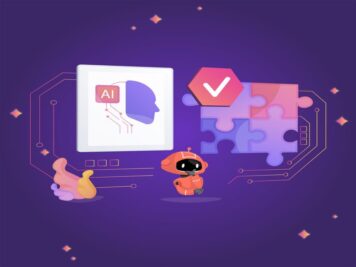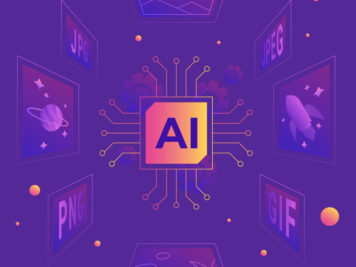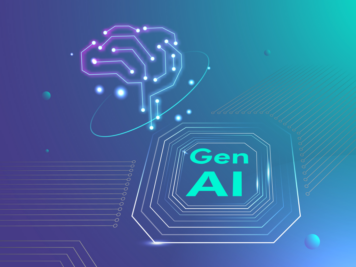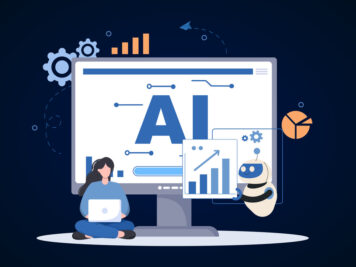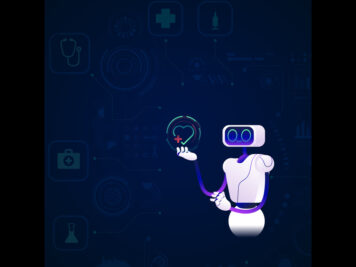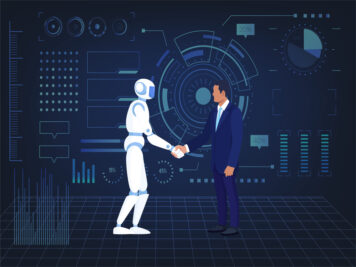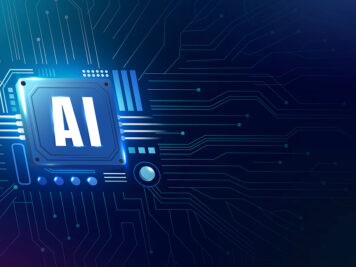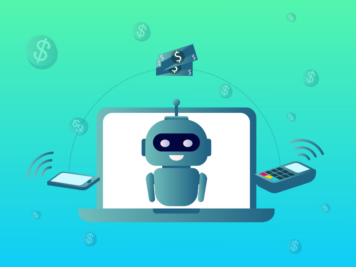We are living in the era of AI, but just having an intelligent system is not enough to stand out anymore. AI only delivers value when it is adaptable, that is, it has the ability to learn and improve itself. Adaptive AI is a constantly evolving entity. It is a system that can provide more accurate, improved insights as output, absorb new data to improve its results, and even modify its code base in real time.
The adaptive AI market is expected to surpass US$ 12,534.54 million in 2029. Early adopters can benefit more. According to Gartner, by 2026, companies that are using AI engineering methodologies to develop and manage adaptive AI systems will outperform their competitors by at least 25% in speed and number of operational AI models.
So, how exactly does it work? What are the applications of adaptive AI? Why should businesses care? This article explores the fundamental ideas, applications, and effective implementation of adaptive AI.
First, let’s clearly define adaptive AI
Adaptive AI is a subset of artificial intelligence that allows machines to constantly learn and improve without human involvement.
Unlike traditional AI systems that rely on predefined rules and static data sets, adaptive AI algorithms change their responses to new information and experience. It has unique features that set it apart from other types of artificial intelligence. This includes:
1. Adaptability: As the name suggests, adaptive AI is flexible. It learns constantly and quickly adapts to new parameters or data sets without human intervention.
2. Accuracy: Adaptive AI’s predictions and decision-making are more accurate through real-time learning and adaptation.
3. Effectiveness: Adaptive AI systems can handle complex scenarios and huge data sets and are effective in solving a wide range of problems.
4. Speed: Adaptive AI adapts to changes in real time. This feature makes it highly efficient and responsive.
Adaptive AI vs traditional AI: Understanding the differences
| Adaptive AI vs traditional AI | ||
| Feature | Adaptive AI | Traditional AI |
| Environment | Dynamic, rapidly changing | Stable, well-defined |
| Learning Process | Continuous learning | Completed over time |
| Knowledge Base | Evolving | Static |
| Performance Over Time | Improves | May degrade |
| Scalability | High | Low |
As you can see, conventional AI works best in stable situations where data and tasks don’t change much over time. In contrast, adaptive AI is better suited to dynamic environments where data and tasks are constantly changing. This is because adaptive AI can learn and continually improve its performance over time.
How adaptive AI works?

Adaptive AI uses a continuous feedback loop:
Data Collection: The process starts with gathering real-time data from multiple sources. User interactions, sensors, or other sources can provide this data.
Model training: The acquired data is fed into the artificial intelligence model. This data is analyzed using machine learning techniques, namely reinforcement learning, and the model algorithms are updated. Through trial and error, the model learns to make better choices.
Performance monitoring: AI always evaluates its own performance. This involves evaluating the performance of the model against predetermined criteria.
Adaptation: Through performance monitoring, AI discovers opportunities for improvement. It then refines its models and algorithms to improve accuracy and efficiency.
Algorithms at work
ML algorithms: These are the cornerstones of AI, enabling it to learn from data and make data-driven judgments based on that data. Reinforcement learning is key here since it allows the AI to learn by making mistakes.
Neural networks and deep learning: These are ML techniques that use layers of interconnected nodes to evaluate large data sets, much like the human brain does. They enable adaptive AI to recognize complex patterns and increase accuracy through continuous learning.
Transfer learning and meta-learning: Transfer learning allows adaptive AI to apply information from one task to improve performance on another task, while meta-learning focuses on learning effectiveness, which speeds up the adaptation process.
Evolutionary Algorithms: Inspired by natural selection, these algorithms optimize AI models by iteratively selecting the best-performing solutions and evolving them over generations, ensuring continuous improvement and flexibility.
Real-world use cases of adaptive AI
Adaptive AI is revolutionizing several sectors. Let’s have a look:
Health care
The industry is ever evolving due to the changing patterns of diseases and growing demands for more personalized care. Adaptive AI can evaluate real-time data from millions of patients to improve diagnosis, anticipate potential health risks, and personalize treatment strategies. Dynamically it can respond to regional variations in patient demographics and treatment practices.
For example, an adaptive AI system in a hospital can adjust risk assessments based on the frequency of certain blood tests performed at the facility. This increases the accuracy of diagnosis and ensures personalized treatment throughout the state or the entire country. Such a practice would make the system more robust and responsive.
Training and education
Adaptive AI is transforming the educational environment by learning from previous experiences of humans and machines. This capability allows you to provide fast and effective learning results in real time.
The United States Army and Air Force, for example, have created an AI-powered learning system that adapts and personalizes courses based on individual’s abilities. It understands what to teach, when to test, and how to track progress. The app works like an individual instructor, customizing instruction for each student.
The influence goes beyond uses in the military. Squirrel AI, a major Chinese educational technology company, recently announced the world’s first adaptive learning large model that includes major courses. This innovative approach has helped Squirrel AI to offer its AI-based educational solutions to overseas consumers.
Transportation
Busy traffic is a mess for tier-1 cities. Adaptive AI can significantly improve traffic flow by monitoring traffic data in real-time and adjusting traffic signals accordingly. It can improve public transportation as well by predicting route needs and adjusting schedules.
The Land Transport Authority of Singapore demonstrates this with its intelligent traffic light system, which uses adaptive AI. This system monitors circumstances in real time and changes light timings to optimize traffic flow, demonstrating the transformative power of this technology.
Automotive
Self-driving cars rely heavily on adaptive AI to navigate uncertain terrain safely and efficiently. Adaptive artificial intelligence improves the performance and safety of these cars by learning from traffic patterns, weather conditions, and unforeseen impediments.
Tesla’s Autopilot system, for example, uses adaptive AI to learn from millions of miles of real-world driving data, constantly adjusting its driving criteria based on this ever-growing data set.
Consumer goods
Static AI models often struggle with the huge volumes of real-time data produced by today’s consumer electronics. Adaptive AI closes this gap by continuously processing the data stream, improving device performance and decision making.
Take Nest Learning Thermostat as an example. This device uses adaptive AI to understand your programming and temperature preferences. It then programs itself to conserve energy while gently adapting to your lifestyle and seasonal changes.
Customer service
AI-powered adaptive chatbots can use consumer behavior data to make personalized suggestions and offers. These chatbots learn from user interactions and refine their responses over time, improving the customer service experience.
Amazon’s Alexa follows the same method. Alexa’s understanding of human speech patterns, language, and preferences improves over time thanks to adaptive AI, resulting in a more functional and rewarding user experience.
Finance
Adaptive AI is transforming real-time transaction monitoring, security, risk assessment, and transaction analysis. Financial institutions use adaptive AI to analyze financial transactions and detect fraudulent activities. It helps them stay up-to-date with new strategies devised by scammers.
PayPal, for example, uses adaptive AI to evaluate transactions and regularly updates its fraud detection algorithms. Adaptive AI also improves decision-making capabilities by offering deeper insights and detecting potential dangers in financial transactions and dealings.
Supply Chain
Businesses now depend a lot on demand projections to stay competitive and increase ROI. Adaptive AI makes accurate demand projections by studying market trends and sales data in real time. This allows companies to manage production, inventory and distribution while eliminating shortages and excess stock.
IBM’s Watson Supply Chain has demonstrated how adaptive AI can simplify complicated business procedures and reduce disruptions. Watson detects disruptions and minimizes risks by learning from different data sources and updating its predictions.
Emerging technologies
Adaptive AI is critical to the widespread adoption of new technologies such as Web 3.0. By reducing the time and resources required for organizations to incorporate these improvements, adaptive AI enables easier transitions and faster adoption, ensuring businesses stay at the forefront of technological innovations.
Why should businesses adopt adaptive AI?
The massive expansion of the adaptive AI industry (expected to reach $6.55 billion by 2028) proves that this technology is no longer a niche notion, but rather a powerful tool for achieving competitive advantage.
- Adaptive AI’s ability to learn and adapt in real time makes it perfect for quick decision-making to tackle complex problems and changing scenarios across industries. It ensures businesses remain agile and competitive.
- The adaptability of adaptive AI makes it perfect for scaling. Businesses planning to expand can adopt this technology to leverage the incrementally increasing data influx and improve ROI. The technology is ideal for long-term plans.
Providing customized plans also becomes easier with adaptive AI as it simplifies the balancing act among shifting market trends, evolving customer expectations, and unforeseen challenges. The technology also allows automation for complex workflows and optimize resource allocation- all while reducing operational costs.
Best practices for adaptive AI implementation
To efficiently implement adaptive AI in your business process, consider these best practices:
- Start with a pilot project to test and improve your strategy. This will help you spot potential challenges and adjust your plan before scaling it.
- Ensure that the data used is accurate, relevant and complete. Poor data quality can reduce the effectiveness of adaptive AI systems.
- Address ethical concerns about data privacy and algorithmic biases. Establish standards and protocols for ethical AI practices.
- Engage stakeholders from all departments to ensure a comprehensive strategy. This ensures that the adaptive AI system is aligned with corporate goals and adjusts to the needs of various departments.
- Develop a culture of constant learning and improvement. To remain effective, adaptive AI systems must be constantly updated and adjusted.
- Educate staff and consumers about the use of adaptive AI. Clear communication fosters trust and eliminates misconceptions.
- Consider partnering with adaptive AI implementation to ensure seamless integration into your business operations. Their experience can help guide and improve the process.
These practices can ensure your adaptive AI system is properly integrated into your processes and is ready to improve its ability to deliver the promised benefits.
Conclusion
As technology advances, organizations must adapt and adopt adaptive AI to remain competitive. Companies can speed up processes, increase decision-making skills, and provide a more personalized experience to customers by incorporating this technology into many elements of their operations. For better outcomes, it is vital to address ethical issues and include cross-functional teams in the implementation process. With proper planning and teamwork, adaptive AI can disrupt businesses and propel them forward.
So don’t delay. Start exploring the possibilities of adaptive AI right away!

